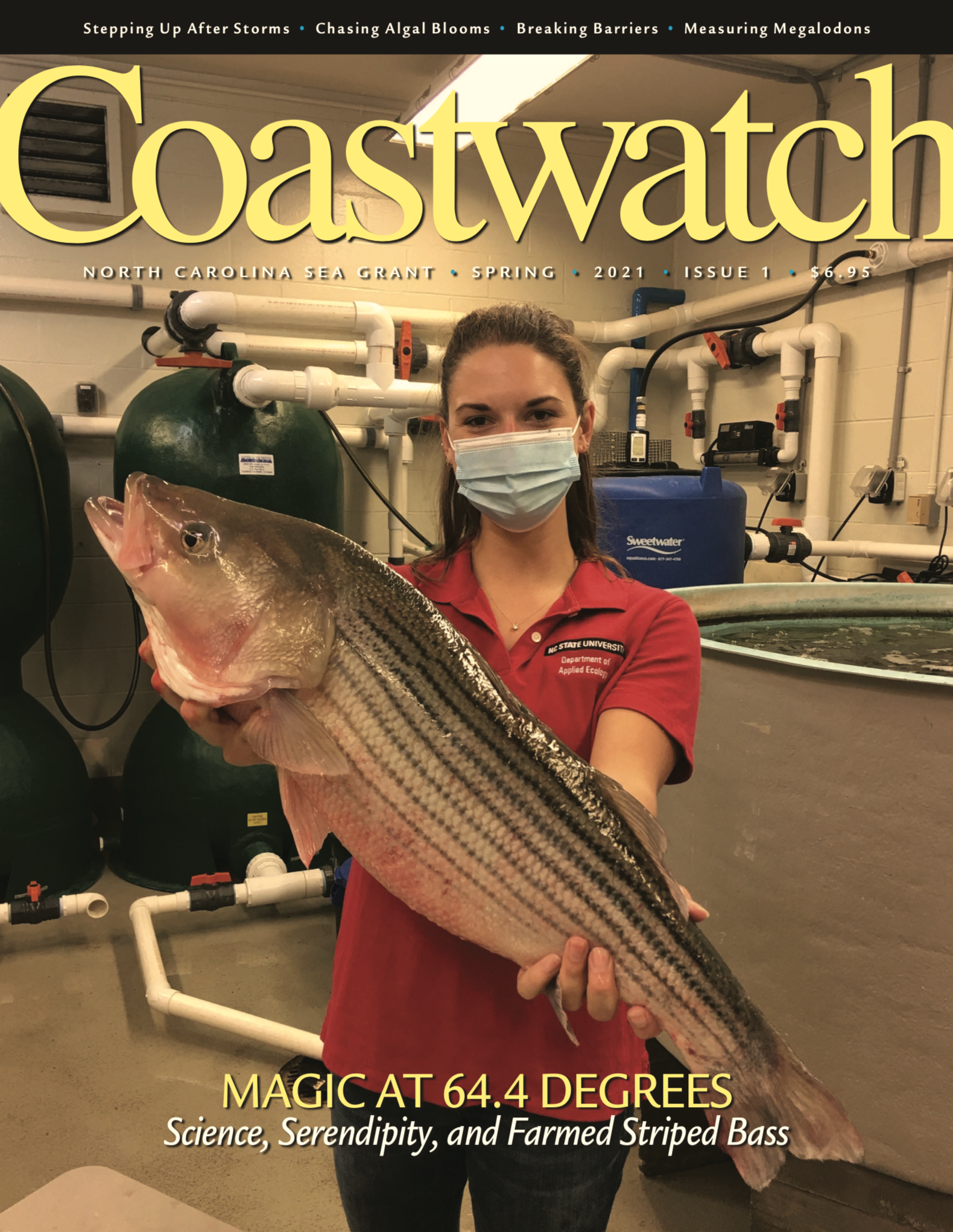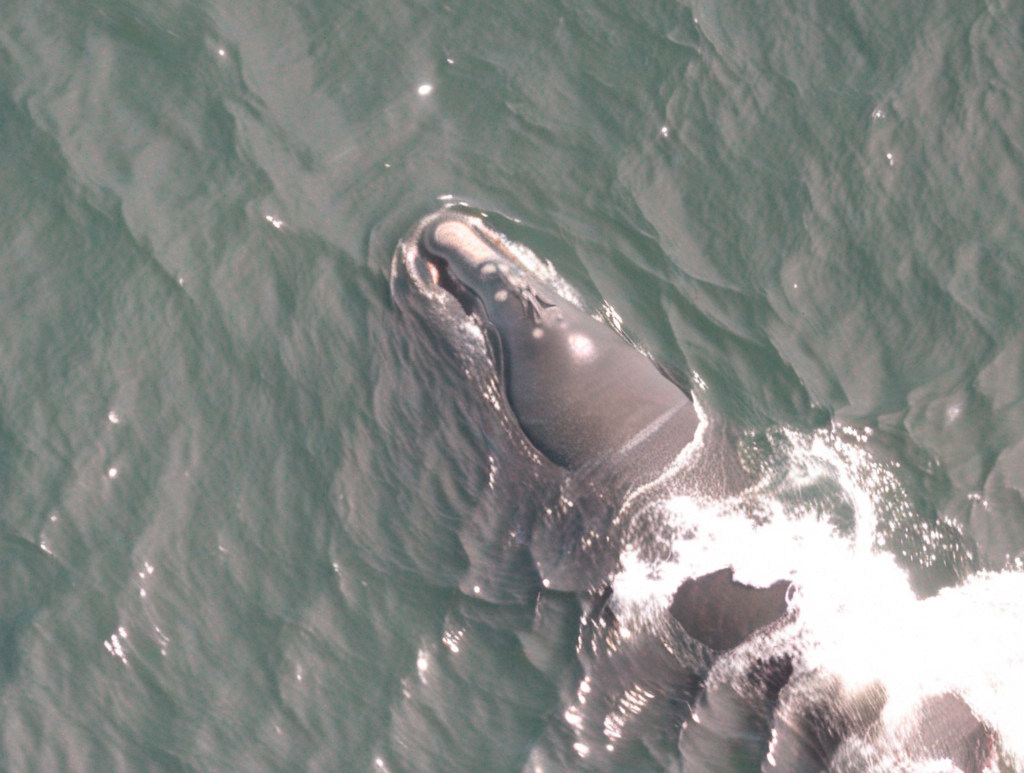Science, Magic, and More Fill the Spring 2021 Issue of Coastwatch
Contact:
Dave Shaw, dmshaw@ncsu.edu
Katie Mosher, kmosher@ncsu.edu
Coastwatch magazine released the Spring 2021 issue today. The latest edition of North Carolina Sea Grant’s award-winning publication takes a behind-the-scenes look at the seafood processing industry, explores the experiences of Black marine scientists, reveals the role that luck played in the latest breakthrough on farmed striped bass — and more.
Susan West’s “In the Wake of Storms” explains how our state’s capacity for seafood processing has declined — but also how wholesalers and distributors have built a network that rapidly deploys initial aid to coastal communities after hurricanes. The story highlights the work of a seminal Community Collaborative Research Grant project.
Diligence and hard-earned expertise contributed to a recent breakthrough that has positioned farm-fresh striped bass for commercial success, and “Magic at 64.4 Degrees” reveals how scientists behind the innovation say they couldn’t have done it without another key ingredient: luck.
Being Black in the aquatic sciences and related fields presents a wide range of challenges for researchers. Lauren D. Pharr explores what it means for four scientists at different stages of their careers in “Breaking Systemic Barriers.”
“Some days, we even operated like a band of storm chasers,” says Haley Plaas, former joint fellow with North Carolina Sea Grant and the Albemarle-Pamlico National Estuary Partnership. Plaas and her colleagues spent last summer chasing algal bloom sightings, and she explains why in “In Full Bloom: Algae, Air Quality, and New Research on the Impacts of Cyanotoxins.”
Farmers and fishers have much in common in the way of obstacles and opportunities, which North Carolina Sea Grant’s coastal economist Jane Harrison explores in “Comparing Apples to Oysters,” her interview with Aaron Corn, a western N.C. apple farmer.
Erin Voigt, former joint fellow with North Carolina Sea Grant and the Albemarle-Pamlico National Estuary Partnership, explains how blue crabs undergo dramatic changes in body shape over their lifetimes — and undertake a vast migration. Her “Crabitat: Juvenile Blue Crab Habitats in Pamlico Sound” chronicles what she found and how her research has evolved.
Do anglers fish illegally? How big was the megalodon shark? Are fewer people getting fishing licenses due to the pandemic? Scott Baker and Sara Mirabilio’s latest edition of Hook, Line & Science has these and more answers.
In addition, Vanda Lewis has collected more succulent new recipes for Mariner’s Menu.
The Spring 2021 issue also includes a Rip Currents Safety Poster. Print it out, put it up, and save a life. (And share the link.)
As always, Coastwatch is available in print and online. Visit ncCoastwatch.org.
##
200,000 people read Coastwatch annually online and in print.
Online: ncCoastwatch.org
In print: go.ncsu.edu/Subscribe-Now. New subscriptions will start with the Summer 2021 issue.
Permissions: Some of the content that appears in Coastwatch is available to republish. Email dmshaw@ncsu.edu.



